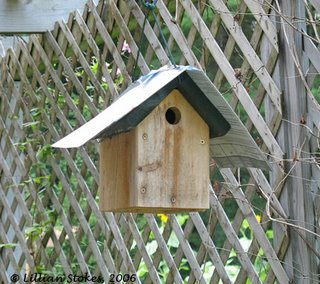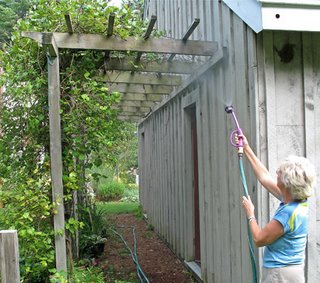Luna moth, goddess of the moon. I saw this beautiful moth last night on our porch because I went outside to close the car windows since it was raining. Named by Linnaeus in 1758 after the Roman moon goddess, Luna, because the moth’s hindwing spots reminded him of the moon. This one is a female, told by shape of antennae. She doesn’t eat, will live for a week, and mate. The long tails confuse the echolocation of predator bats. Very cool!
Tuesday, June 29, 2021
Luna Moth, Goddess of the Moon!
Luna moth, goddess of the moon. I saw this beautiful moth last night on our porch because I went outside to close the car windows since it was raining. Named by Linnaeus in 1758 after the Roman moon goddess, Luna, because the moth’s hindwing spots reminded him of the moon. This one is a female, told by shape of antennae. She doesn’t eat, will live for a week, and mate. The long tails confuse the echolocation of predator bats. Very cool!
Wednesday, June 09, 2021
Going Cuckoo
Cuckoos are secretive, eat lots of caterpillars and are mostly heard not seen. Black-billed Cuckoos breed in forest habitats across much of the upper two-thirds of the U.S. from MT east and into southern Canada. Listen for their low pitched cu cu cu cu call. Tell them from the similar Yellow-billed Cuckoo by their black bill and red-eye ring. Yellow-billed Cuckoo has a yellow lower mandible and yellowish eye-ring and its breeding range extends across much of the eastern two-thirds of the U.S. Look for them now!
Listen to Black-billed Cuckoo here,
Listen to Yellow-billed Cuckoo here,
The Secret Lives of Red-eyed Vireos
Red-eyed Vireos are abundant in about the eastern two-thirds of the country and much of Canada. The male sings almost constantly, even after getting a mate.
From Stokes Guide to Bird Behavior, Vol. 1,
"At some point, he will stop singing and you will notice an immediate change in the female's behavior. She begins to look in all directions, move about on the nest, and may even give one of her calls. In a minute or two, she flies off to meet the male and is either fed by him or feeds on her own. After about five minutes the male will be singing from the treetops again and, possibly without your even noticing, the female will have come back to the nest and resumed incubating. From this will be clear to you that the male's song is being closely listened to by the female and is a continual aural contact that helps the pair coordinate this phase of their lives." This is an intimate look into the secret life of Red-eyed Vireos. We wrote our behavior guides to create holistic birding, in which you go beyond mere identification and get a deeper appreciation and respect for the amazing lives of birds. (Always observe nests from a safe distance so as not to disturb birds.) Listen to the song of a Red-eyed Vireo here, I guarantee you will hear it if you are in their range.
Wednesday, June 02, 2021
10 Tips Tips to Help Bids in Hot Weather!
and bathe.
Orange halves are a refreshing treat in warm weather for this Gray Catbird.
An extra roof cools off the bird house above and below.
This baby American Robin cooled off the only way it knows how by panting. Birds have no sweat glands and so cool themselves by rapid respiration with their mouths open.
I used the mister setting on the hose to cool off the robin nest by misting the air and foliage above.
Hummingbird Feeder with shade roof.
The weather has been crazy, ranging from one extreme to another. Here in NH we just had 90-degree summer weather, now it has cooled off a little. Much more hot weather is coming as we go into summer. So when the temperature climbs, here are some tips to keep your feathered buddies cool:
1. Birdbaths, birdbaths, birdbaths! Birds need water to bathe and drink in hot weather so buy a birdbath. You can even use any wide flat container for a birdbath, such as the lid of a trash can or a large saucer that is used under a flowerpot.
2. Choose a birdbath that is shallow and has a non-slip surface. Small birds do not like to bathe in deeper water. You can add flat rocks to a birdbath that is too deep in order to create a shallow ledge for small birds to land on to drink and bathe.
3. Add a dripper, bubbler, or to your birdbath. The sound of moving water will be a magnet for the birds and alert them to the presence of a water source.
4. Keep the water in your birdbath cool by adding ice cubes several times a day, or refilling the birdbath with a hose. You can also put out refreshing treats like cold orange halves which many birds, such as orioles and Gray Catbirds, will enjoy.
5. Birds will feel safer if the birdbath is placed in a more open area so no predators can hide nearby. Provide a stake or branch placed in the ground near the birdbath, if no landing places exist near it, so birds have a place to wait their turn at the bath.
6. Air condition your birdhouses by adding a second roof for shade. We nail on a piece of plywood, using long nails and only nailing them partway into the original roof. This leaves an air space between the two roofs of about an inch. The second roof shades the first roof plus the airspace between the roofs acts as an insulator, keeping the birdhouse cooler. In some cases, we have just shaded the roof of a birdhouse with piece of cardboard.
7. Misters are coolers. Misters can be bought to attach to a birdbath or clip to shrubs near a bath. They spray a fine mist that birds can fly through, or rub against the wet shrubbery. Hummingbirds will often fly through misters or even a garden sprinkler.
8. Use a mister on a hose. Our hose has a mist setting on the nozzle. We have misted the foliage and area above a robin nest to cool off the babies in extreme heat.
9. Think Shade. Birds will seek out shady areas and lie low in the worst heat of the day. If you do not have shade on your property plant some shade trees and big shrubs. Place bird feeders in a shady area during summer.
10. Shade hummingbird feeders. Place them in shade. Some feeders, such as our Stokes Select Jubilee Hummingbird Feeder, pictured above, comes with its own shade/rain roof, including an ant moat on the roof. You can also buy baffle-type shields and hang them above a feeder. Don't forget to change your hummingbird nectar solution every 2 days in really hot weather.
And tips for you....
Stay out of the sun and heat in the middle of the day, wear a hat and sunscreen when you do go out, and, at the end of the day, after you have taken care of the birds, relax in a shady place, get out your binos and The New Stokes Field Guide to Birds: Eastern or Western Region, watch your birds and have a cold beer, daiquiri, margarita, or some Prosecco,,,aaahhh!












